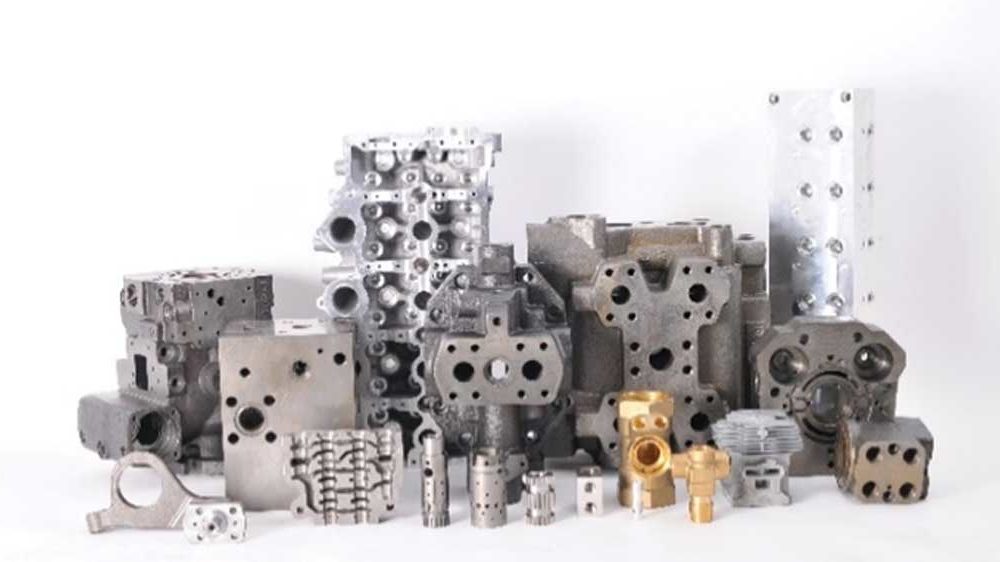Sharp-edged and burr-free with thermal deburring
June 29, 2017 6:17 pm
With stringent quality demands, producing burr free and clean components is playing an increasingly important role in all areas of industry. Manual deburring and cleaning or for that matter conventional methods fail to ensure reliability and consistency to produce parts with desired quality of burr free and cleanliness.
With evolvement of technologies, various modern techniques are employed to produce burr free and clean parts. Amongst these techniques, the thermo-chemical deburring (TCD) method more popularly known as TEM deburring is gaining popularity. It is very effective and reliable process to remove both internal and external burrs in one go.
In many instances, stress (developed during machining) relieving is observed.
During TEM cycle, components are placed in a pressure vessel, at times suitable mounting or fixtures are used, if required, to hold parts and avoid collision. The chamber is then hydraulically closed and filled with a precisely-metered gas mixture under pressure. This gas mixture is ignited and a brief combustion of around 20 milli-seconds takes place. This time is sufficient to heat the burrs, which have a relatively large surface but a very low mass, up to ignition temperature. The result is a reaction between the hot burrs and the excess oxygen in the chamber.
Oxidation removes burrs
Combustion is a chemical process wherein burrs are oxidised. They are not melted or blasted as is often assumed. The workpiece has disproportionately very large mass, as compared to burrs, and thus heats up just about 80°C to 150°C during this 20 milli-seconds combustion. As a result, combustion of the burrs is not extended beyond the workpiece edge.
Gas filling pressure and the mixing proportion have a significant influence on the deburring results and can be adapted depending on the material and the burr situation.
Workpieces can still have sharp-edges after TEM, but they are burr free. A typical TEM cycle is less than a minute and thus is highly productive. While most of the oxides are carried away by flue gases, oxides that are leftover on workpiece, can be cleaned using ultrasonic rinse or bath and a suitable washing medium.
In general, all materials which can be oxidised are suitable for the process. This includes steel, stainless steel, aluminium, cast materials, brass, zinc and zinc die-castings. Even many varieties of thermoplastic plastics can be processed.
Thermal deburring further developed
ATL Analagentechnik Luhden GmbH is a leading manufacturer of TEM equipment and has further developed the process technically over the last few years.
A new type of gas metering system enables precise gas metering and logging gas consumption. Parameters used can be recorded and recalled for repeat job. A new angular deburring chamber is developed that enables aluminium or zinc pressure castings to be processed and transferred to a washing process after deburring.
With deep experience, ATL GmbH can offer fixture design for ease of part handling to meet the industry requirements. ATL produces iTEM series of new machines and is the only manufacturer worldwide that integrated the refrigeration unit for process cooling in the TEM equipment. This resulted in smaller floor area and reduce the installation cost for users
As mentioned before, TEM can be employed in plastics sector also. A special series iTEM machines makes it possible to process parts with a much lower gas filling pressure. This is achieved by creating a vacuum in the deburring chamber before the actual gas metering takes place, thanks to new gas metering system developed by ATL.
Benefits of thermal deburring for the user are evident; the process offers uniform internal and external deburring of workpieces without influencing the surface structure. In some plastics, improvement (smoothness) on surface is achieved.
Conclusions
• TEM deburring is a reliable process to produce burr free and clean parts.
• This process is extremely reliable for removing internal and cross-sectional burrs those are hard to reach by any other method; example hydraulic and pneumatic bodies or manifolds and elements, Diesel Fuel System (DFS) parts.
• Component geometry plays only a subordinate role.
• Since, even the smallest particle is combusted, the process results in a previously unrivalled cleanliness at rapid cycle times and low energy costs.
• TEM offers the user an efficient, flexible and low cost (per part) deburring system, often at lower procurement and process costs in comparison with high-pressure water jet deburring and many other methods.
• The unit costs, for example during bulk goods
processing, can seldom be bettered by any other deburring process.
• TEM neither calls for special tools, nor needs any elaborate programming such as, for example, during high-pressure water jet deburring.
Authored by__
Praveen Goyal, MachTools TechnoServe P Ltd with inputs from Martin Koellner, Director Sales; ATL Analagentechnik Luhden GmbH
Contact
MachTools TechnoServe P Ltd
B 207, Okhla Industrial Area,
New Delhi – 110020
Tele: +91-9810615463
Email: sales@machtools.in
Cookie Consent
We use cookies to personalize your experience. By continuing to visit this website you agree to our Terms & Conditions, Privacy Policy and Cookie Policy.


















